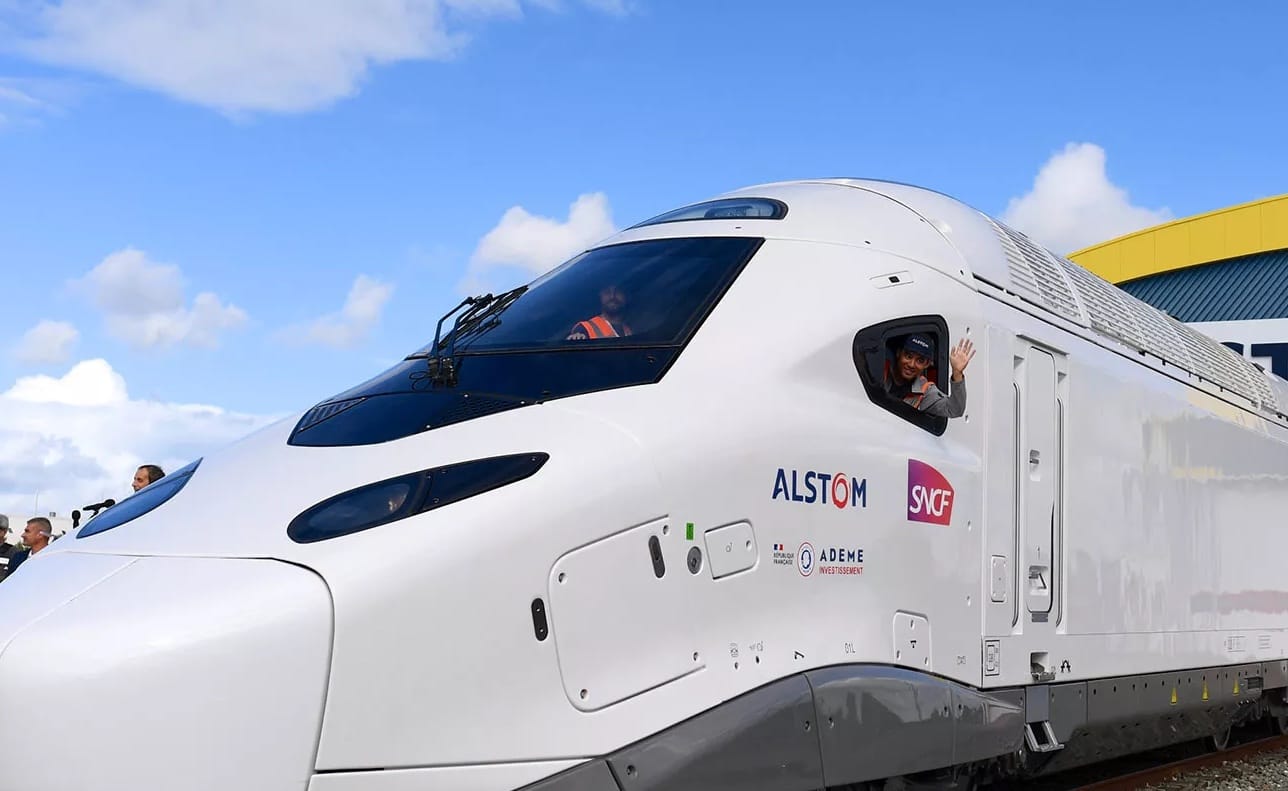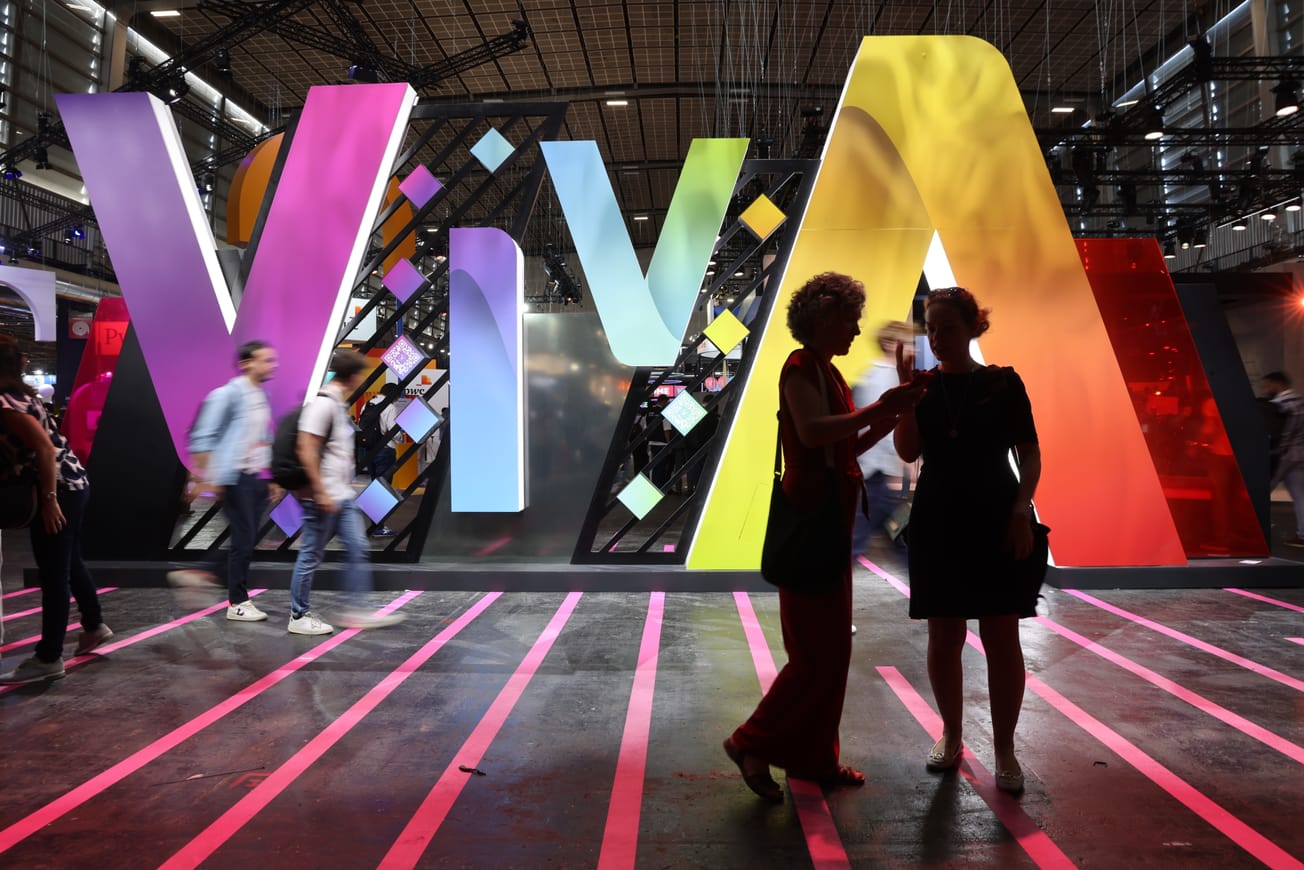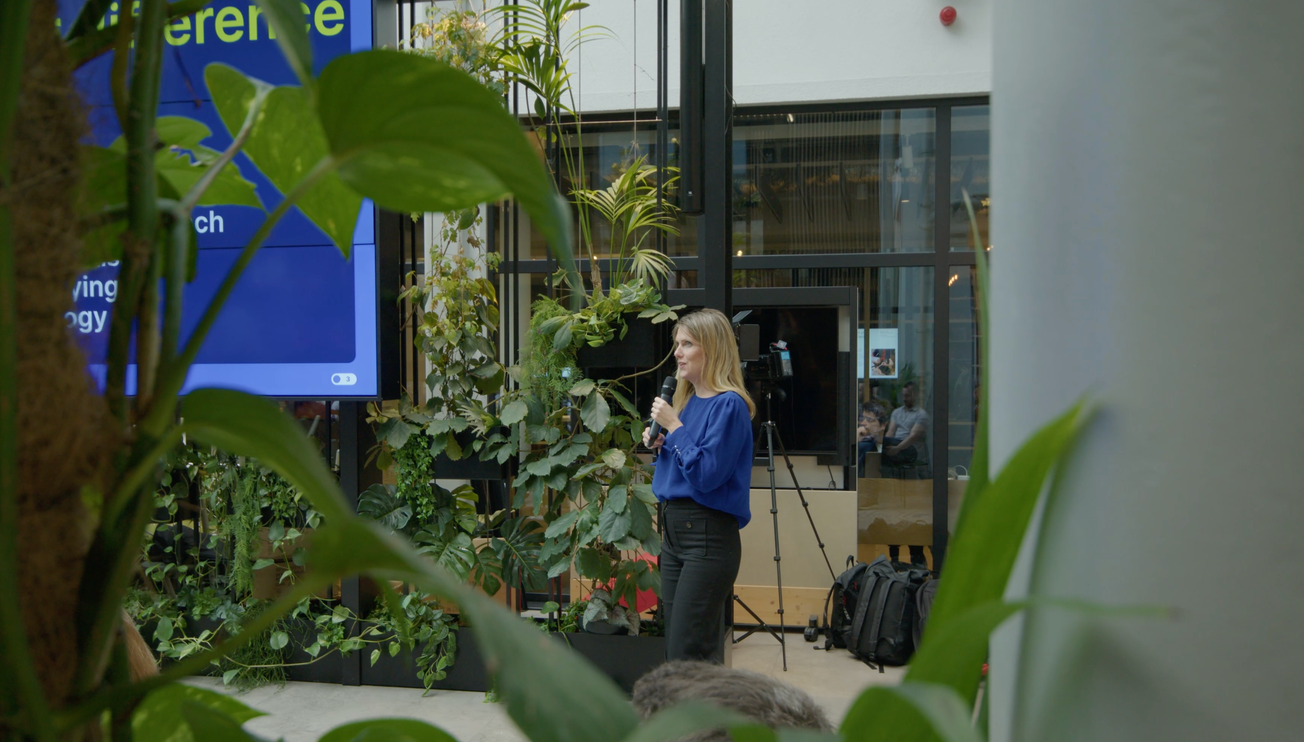Last week SNCF officially unveiled its so-called “TGV of the Future.” Gathered at the Belfort factory of production partner Alstrom in northeastern France, officials praised the TGV M as a significant leap forward in terms of economy, ecology, and social impact.
SNCF claims the TGV M will reduce passenger CO2 emissions by 32%, electricity consumption by 20% thanks to its enhanced engine and streamlined design, and reduce maintenance costs by 30%. While the train will run at the same speed as the classic TGV, its modular (the “M” in TGV M) layout enables a 20% increase in passenger capacity, more room for bikes, and improved accessibility for passengers with disabilities.
For SNCF, the TGV M is a technical marvel that recalls the company’s history as a high-speed rail innovator. It is also two years late. SNCF ordered 115 trains in 2018 for €3.5 billion that were supposed to be operational by 2023, but that timetable has slipped to 2025 as Alstrom encountered more technical challenges than expected.

The deployment of the TGV M will be a major undertaking, one that highlights the complexity facing SNCF as it tries to scale its innovation initiatives. Indeed, the TGV M is only one part of a much broader digital transformation plan that SNCF has developed to meet the significant economic and ecological pressure it faces. The company must find a way to transport a predicted increase in passengers while cutting its carbon footprint – just as it is facing competition for the first time. The company must do this while striking a balance between disruption and dependability for the 10 million French passengers it carries every day.
To reconcile these competing constraints, SNCF is betting big on innovation. It is pouring a whopping €2 billion of its annual budget into new technologies – both internal projects and startups – as the company seeks to reinvent every aspect of its rail services: improving customer experience, optimizing operational efficiency, fostering environmental sustainability, and attracting and retaining new talent.
"Innovation is integral to SNCF," says Julien Nicolas, Director of SNCF’s Digital Division and President of its 574 venture capital fund. "From our inception with the creation of the railway network to the advent of the TGV, and now with the integration of generative AI and IoT, we're constantly leveraging new technologies to elevate the customer experience."
Traveling with the times
Getting the nation’s largest corporations to accelerate their digital transformation has been a key pillar of the French government’s strategy to turbocharge its innovation economy over the past decade. For SNCF, this means reinventing both culture and strategy at a company that has prioritized reliability over risk, as well as giving its stiff public image a makeover to attract the high-tech talent it needs.
Founded in 1938, SNCF (Société Nationale des Chemins de fer Français) is fully state-owned with 275,000 employees, making it one of the nation’s corporate giants. In 2023, the French government announced it would spend €100 billion by 2040 to renovate the rail network and develop new infrastructure. With the government trying to move passengers from short-haul flights to trains while also pressing climate change goals, SNCF faces greater pressure to adapt than a typical corporation.
While SNCF has gradually evolved its digital products since 2000, the company launched a far more ambitious digital transformation in 2015, vowing to use data and connected technologies to improve every aspect of its service. The company improved wifi service across its network, released a mobile app, and gained maintenance efficiencies.
Along the way, SNCF has been taking pains to illustrate its dedication to tech through a strong presence at conferences like this month’s big annual tech meet, Vivatech.
Recently, I attended another such event. Early one morning, I traveled from Paris to Saint-Denis, an upcoming Northern Parisian suburb, to attend a digital keynote. The event was held at a building near SNCF's corporate headquarters called 574, a reference to the 574 km/h record one of its trains set in 2007. One of SNCF’s 7 digital headquarters, 574 is a sprawling building that opened in 2015 with futuristic interior design influences. The colorful and cozy seating arrangement and wooden, organically stocked breakfast bar suggested a Silicon Valley vibe.

The goal of the 574 centers is to inspire employees and to explore ideas from AI to Quantum and Augmented Reality. The 574 digital houses host project teams with cross-functional skills, intrapreneurs, and simply curious individuals. “It's all about empowering our team to stay ahead in an ever-changing industry,” Nicolas told me.
At the event, SNCF execs presented 13 major innovation projects across 7 of the company’s divisions, covering such technologies as robot-assisted part maintenance, automatic train scheduling, image analysis, AI, and 5G. They painted a vision of a data-driven train network that leverages real-time passenger information collected from thousands of sensors to deliver greater efficiency and service.
The tech talk and bubbly optimism struck a sharp contrast to the traditional bureaucratic and 90s-style imagery that usually springs to mind whenever the historic, state-owned company is mentioned.
SNCF now spends 5% of its annual budget on digital initiatives – about €2 billion annually. Part of that money funds its work with 300 startups. At the keynote, the executives announced they would add 700 new digital jobs to the current team of 4,500.








